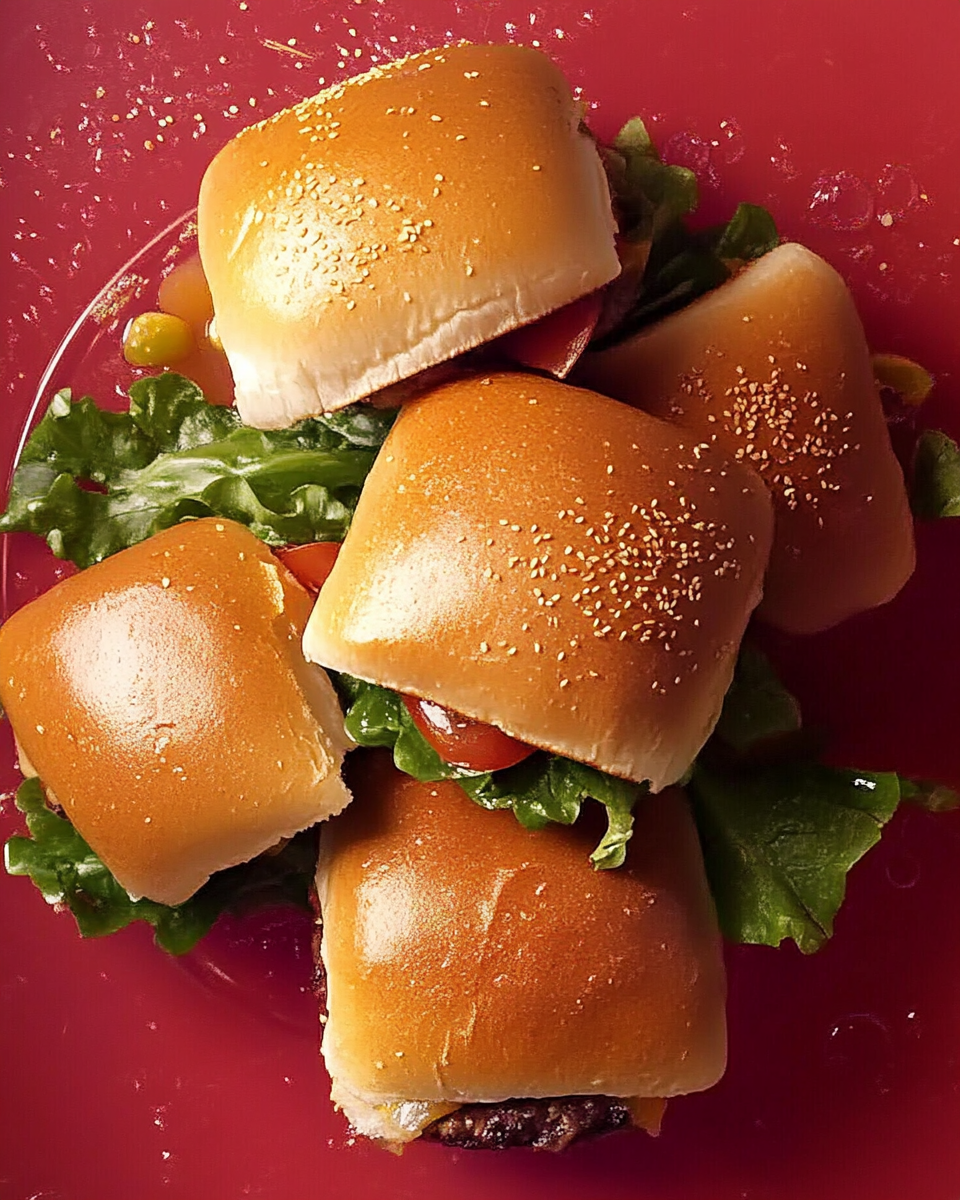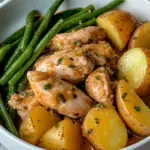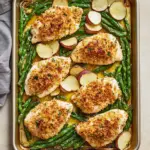Krautburgers, also known as “kielbasa rolls” or “cabbage rolls,” are savory pastries filled with a mixture of sauerkraut, ground meat, and spices. This dish has roots in German and Eastern European cuisine, making it a beloved comfort food in many households. Whether you’re serving them for a casual family dinner or a festive gathering, Krautburgers are sure to be a hit.
Full Recipe:
Ingredients Breakdown
To make Krautburgers, you will need the following ingredients:
For the Dough:
- 4 cups all-purpose flour: The base of the dough, providing structure.
- 1 packet (2 ¼ teaspoons) active dry yeast: Helps the dough rise and become fluffy.
- 1 teaspoon salt: Enhances flavor.
- 1 cup warm milk: Activates the yeast and adds moisture.
- 1/2 cup unsalted butter: Adds richness and tenderness to the dough.
- 1/4 cup sugar: A touch of sweetness that balances the savory filling.
- 1 large egg: Acts as a binder and adds richness.
For the Filling:
- 1 medium onion, chopped: Adds flavor to the filling.
- 1 pound ground beef or pork: The main protein source; you can also use turkey or a meat substitute.
- 2 cups sauerkraut, drained and chopped: The star ingredient that gives the Krautburger its name.
- 1 teaspoon caraway seeds (optional): Adds a distinctive flavor, popular in German cooking.
- Salt and pepper to taste: Essential for seasoning the filling.
Step-by-Step Instructions
Step 1: Prepare the Dough
- Activate the Yeast: In a small bowl, combine warm milk and sugar. Sprinkle the yeast over the top and let it sit for about 5-10 minutes until frothy.
- Mix Dry Ingredients: In a large mixing bowl, whisk together the flour and salt.
- Combine Ingredients: Add the activated yeast mixture, melted butter, and egg to the flour mixture. Stir until a dough begins to form.
- Knead the Dough: Transfer the dough to a floured surface and knead for about 5-7 minutes until smooth and elastic.
- Let it Rise: Place the dough in a greased bowl, cover it with a clean kitchen towel, and let it rise in a warm place until it doubles in size (about 1-2 hours).
Step 2: Prepare the Filling
- Cook the Meat: In a skillet over medium heat, add the chopped onion and ground meat. Cook until the meat is browned and the onions are translucent. Drain any excess fat.
- Add Sauerkraut: Stir in the drained and chopped sauerkraut. If using, add caraway seeds, salt, and pepper. Cook for an additional 5 minutes, then remove from heat and let it cool slightly.
Step 3: Assemble the Krautburgers
- Preheat Oven: Preheat your oven to 375°F (190°C).
- Divide the Dough: Punch down the risen dough and divide it into equal pieces (about 10-12, depending on desired size).
- Roll Out the Dough: On a floured surface, roll each piece into a circle (about 6 inches in diameter).
- Fill the Dough: Place a generous spoonful of the filling in the center of each dough circle.
- Seal the Pastries: Fold the dough over the filling and pinch the edges to seal. You can also crimp the edges for a decorative touch.
- Arrange on a Baking Sheet: Place the filled pastries on a greased baking sheet, seam side down.
Step 4: Bake the Krautburgers
- Brush with Egg Wash: Beat an egg and brush it over the tops of the pastries for a golden finish.
- Bake: Bake in the preheated oven for 20-25 minutes or until the tops are golden brown.
A Brief History
The origins of Krautburgers can be traced back to German immigrants who brought their culinary traditions to the United States in the 19th and early 20th centuries. Many German settlers, particularly in the Midwest, adapted traditional recipes using locally available ingredients. Sauerkraut, a fermented cabbage dish, was a staple in these communities and was often used as a filling in various baked goods.
Krautburgers became particularly popular in areas with a strong German influence, such as Nebraska, Minnesota, and Wisconsin. Over time, they evolved into a beloved comfort food, often served at family gatherings, church picnics, and holiday celebrations. The name “Krautburger” itself reflects the central ingredient of sauerkraut, combining the German word for cabbage (“kraut”) with the English word “burger,” suggesting a hearty filling.
Cultural Significance
Krautburgers hold a special place in the hearts of many who grew up with them. They symbolize home-cooked comfort, evoking memories of family meals and gatherings. In many households, making Krautburgers is a cherished tradition, passed down through generations. Family members often gather to prepare them together, sharing stories and laughter in the process.
These pastries are not only a staple in German-American cuisine but also reflect the adaptability of immigrant cultures. They showcase how traditional recipes can evolve, incorporating new flavors and ingredients while still honoring their roots. Krautburgers have also found a place in modern cuisine, appearing in various food festivals and local restaurants that celebrate regional specialties.
Flavor Profile
The flavor of Krautburgers is a harmonious blend of savory and tangy. The filling, typically made with a mixture of sauerkraut and ground meat, provides a robust flavor complemented by the mild sweetness of the dough. The fermentation of the sauerkraut adds a unique tang, balancing the richness of the meat.
Variations in seasoning, such as the addition of onions, garlic, or spices like caraway seeds, can enhance the flavor profile even further. This versatility allows for creative adaptations, making Krautburgers appealing to a wide range of palates.
Variations and Customizations
One of the best aspects of Krautburgers is their versatility. While the traditional filling consists of sauerkraut and meat, there are countless ways to customize this dish to suit personal tastes or dietary preferences.
- Vegetarian Krautburgers: For those who prefer a meatless option, simply replace the ground meat with a mix of sautéed mushrooms, lentils, or even tofu. Adding extra spices or herbs can enhance the flavor and create a satisfying filling.
- Cheesy Krautburgers: Incorporating shredded cheese into the filling is a delicious twist. Cheddar or Swiss cheese melts beautifully, adding a creamy texture and enhancing the overall flavor.
- Spicy Variation: For those who enjoy a bit of heat, consider adding diced jalapeños or red pepper flakes to the filling. This spicy kick can elevate the dish and appeal to adventurous eaters.
- Herbed Variations: Experimenting with different herbs such as dill, thyme, or parsley can bring fresh flavors to the filling. These herbs pair wonderfully with the tangy sauerkraut and enhance the overall taste.
Serving Suggestions
Krautburgers are incredibly versatile when it comes to serving options. They can be enjoyed on their own or paired with a variety of sides and sauces:
- Dipping Sauces: Traditional accompaniments include mustard or a tangy dipping sauce, which can complement the flavors of the filling. Consider serving with a creamy horseradish sauce or a spicy mustard for added zest.
- Side Dishes: Krautburgers pair well with a simple salad, roasted vegetables, or even a bowl of soup. A light coleslaw or potato salad can also make for a refreshing side.
- Garnishes: Fresh herbs, such as parsley or chives, can be sprinkled on top before serving for a pop of color and added flavor.
Storage and Reheating
Krautburgers are perfect for meal prep and can be made in advance. Here are some tips for storing and reheating:
- Storing: Allow the Krautburgers to cool completely before placing them in an airtight container. They can be stored in the refrigerator for up to three days or frozen for longer storage.
- Freezing: If you plan to freeze them, consider freezing them uncooked. Simply assemble the Krautburgers and place them in a single layer on a baking sheet to freeze. Once frozen, transfer them to a freezer-safe container or bag. When ready to cook, bake them directly from the freezer, adding a few extra minutes to the baking time.
- Reheating: To reheat, place the Krautburgers in a preheated oven at 350°F (175°C) for about 10-15 minutes, or until warmed through. This will help maintain their flaky texture.
Conclusion
Krautburgers are more than just a tasty dish; they are a celebration of culinary heritage and family tradition. With their unique flavor profile and adaptability, they can easily fit into any meal or occasion. Whether enjoyed at a family gathering, a cozy dinner at home, or as a fun addition to a potluck, Krautburgers have a way of bringing people together.
The beauty of Krautburgers lies in their versatility—there’s a version for everyone, whether you prefer meat, vegetarian, or even spicy options. By experimenting with different fillings and serving styles, you can create a dish that’s uniquely yours.
As you share this delicious recipe with friends and family, you’re not just sharing a meal; you’re passing on a piece of culinary history, a tradition that has stood the test of time. So roll up your sleeves, gather your loved ones, and enjoy the process of making these delightful pastries together. Krautburgers are sure to become a cherished favorite in your home as they have in countless others.






